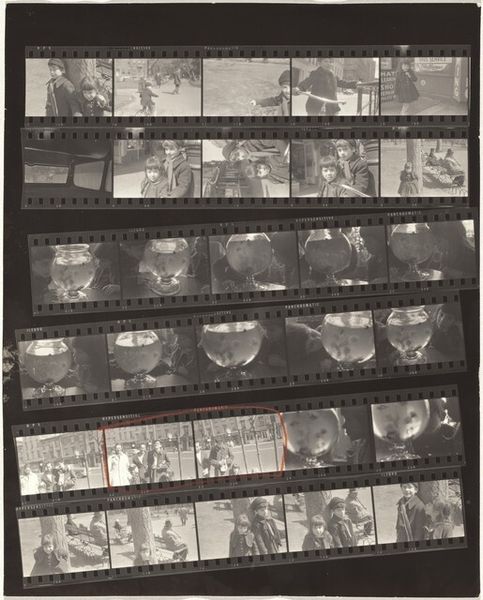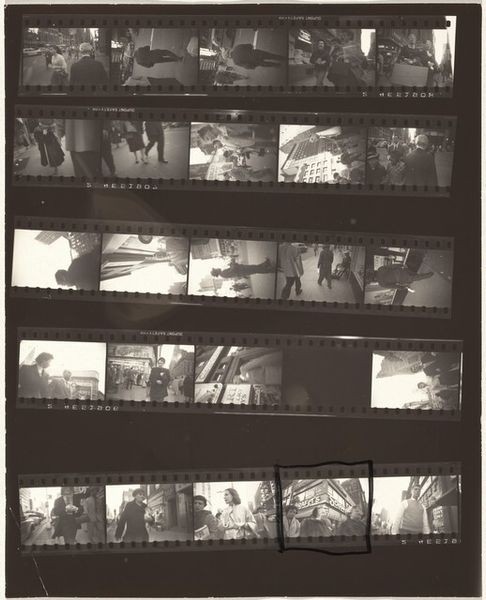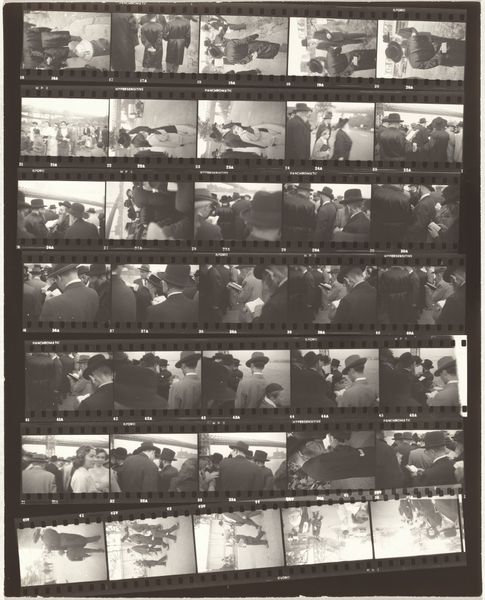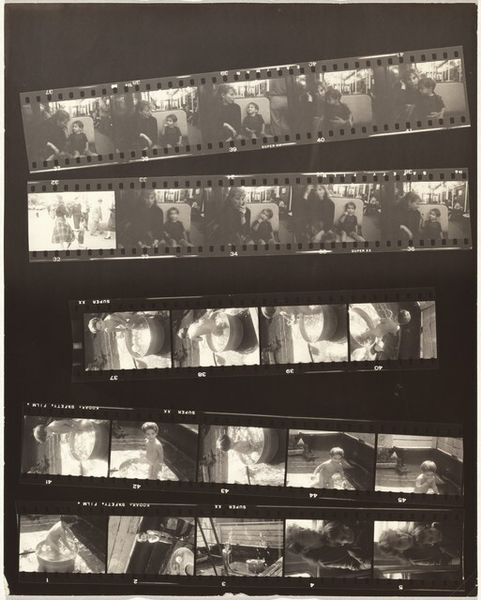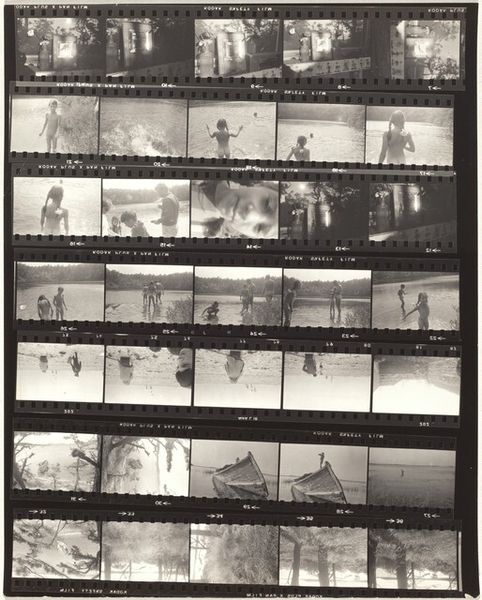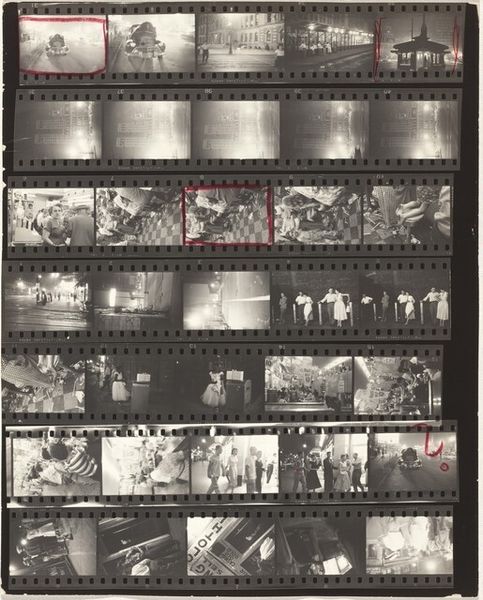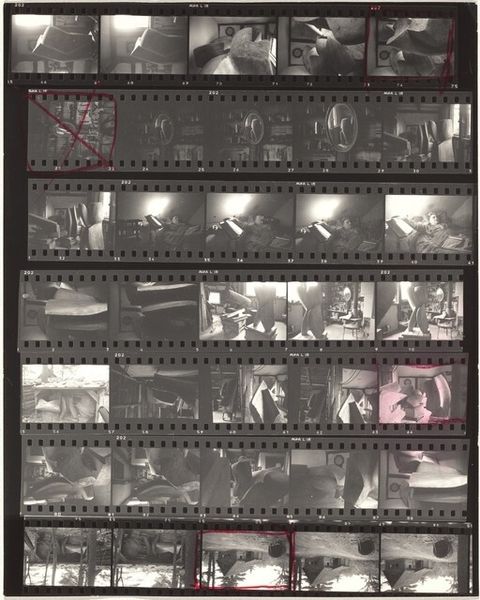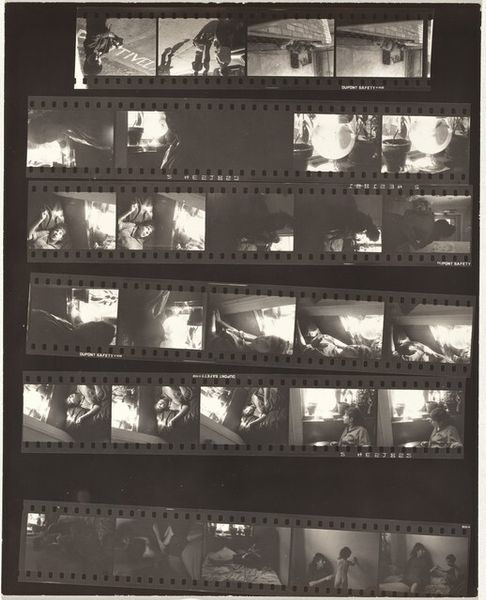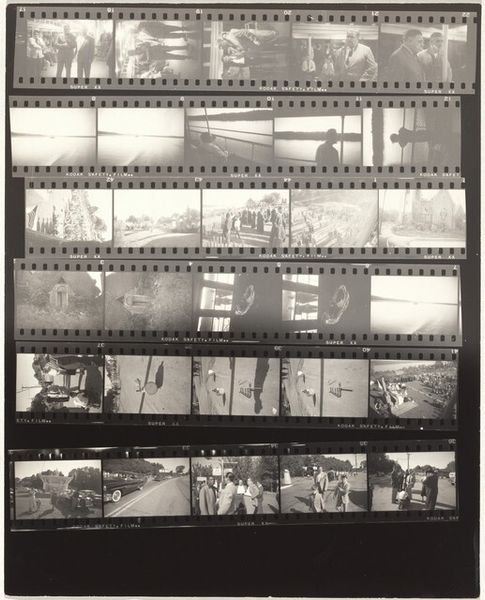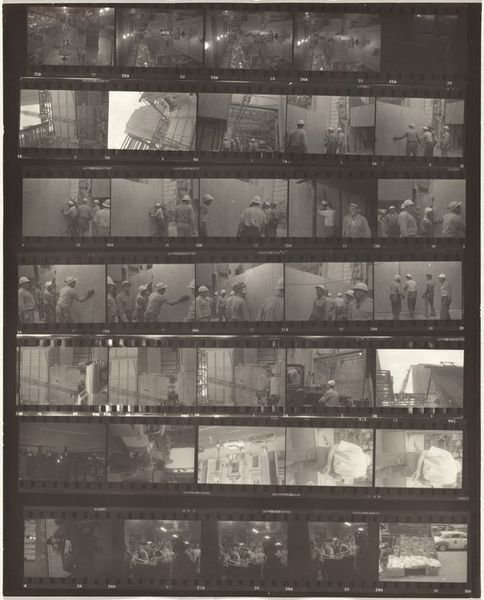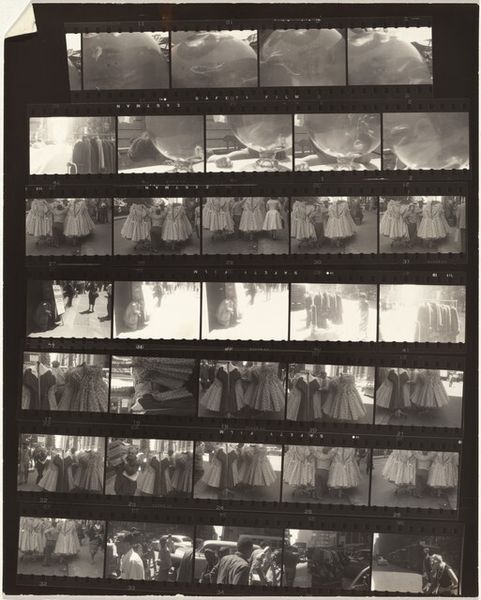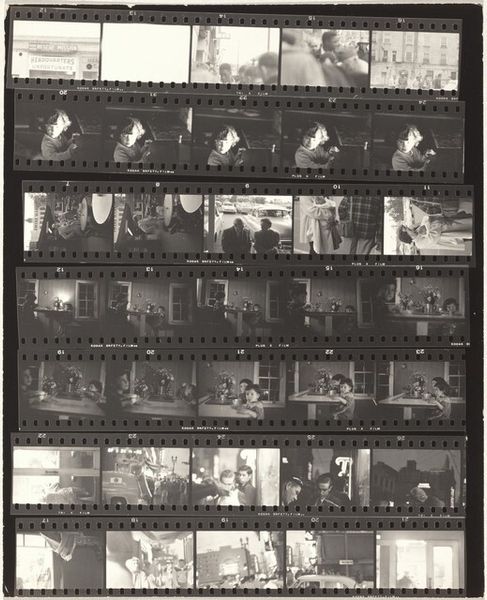
photography, gelatin-silver-print
#
portrait
#
wedding photography
#
ceremony
#
warm monochrome
#
archive photography
#
street-photography
#
photography
#
gelatin-silver-print
#
monochrome photography
#
celebration photography
#
monochrome
Dimensions: sheet: 25.3 x 20.3 cm (9 15/16 x 8 in.)
Copyright: National Gallery of Art: CC0 1.0
Curator: Robert Frank’s gelatin-silver print, "23rd Street weddings--New York City no number," was captured sometime between 1953 and 1954. It's essentially a contact sheet. My first thought is of voyeurism—observing these intensely personal moments through the grid of the film. Editor: It does have that sense of being uncomfortably intimate, doesn’t it? These fragments, these frozen instances of, presumably, happiness and commitment… it’s like rifling through someone's private memories. The grainy monochrome only adds to that raw feeling. Curator: Absolutely. The contact sheet as a medium inherently plays with ideas of selection and documentation. It reveals the photographer’s editing process, highlighting what was deemed worthy of further attention, and what was left behind. These discarded moments tell a story, too. Editor: And it really speaks to the accessibility—or perhaps inaccessibility—of the “American Dream” in the 1950s. Who are these people, gathered outside a New York City wedding venue? The visible diversity of race and social status juxtaposed with this rigidly defined social ritual is pretty provocative. Curator: Frank often aimed to subvert expectations in his work. While ostensibly documenting American life, his images often contained an undercurrent of critique. A wedding, traditionally symbolic of optimism and union, is fragmented here, hinting at potential complexities or even disillusionment beneath the surface. Editor: This also evokes questions about the constructed nature of these images. While appearing spontaneous, they're anything but accidental. The very act of photographing, editing, and then presenting them as a contact sheet creates a complex layering of meaning around performance, identity, and the pursuit of happiness. Curator: Exactly. The "decisive moment" Cartier-Bresson was so eager to catch turns into multiple indecisive and intermediary instants in this photograph. It presents various possible readings and denies an essential significance. Editor: It really is a striking meditation on how we curate our own narratives. The images, fragmented, give glimpses of hopes, anxieties, and expectations around this traditional milestone. Makes me think about how much has changed, and also how much remains the same when considering representation of this sacred ritual within our contemporary culture. Curator: I concur; its accessibility creates intrigue. It prompts us to question what these moments really represent in the bigger narrative of societal progression.
Comments
No comments
Be the first to comment and join the conversation on the ultimate creative platform.
